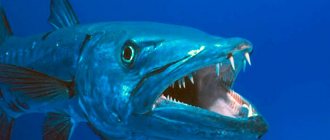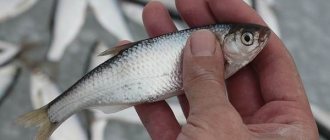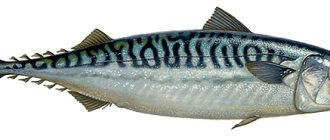The ball fish is a member of the pufferfish or four-tooth family (Tetraodontidae). In nature, they live in tropical and subtropical waters of Africa and Southeast Asia.
Together with hedgehog fish (Diodontidae), it belongs to the order of pufferfish (Tetraodontiformes). Ball fish and hedgehogs are confused because of their ability to inflate into a spiky ball when in danger. It's easy to distinguish.
- The mouth of the ball fish is small, with plump lips. The hedgehog has a large, narrowed beak.
- The hedgehog has one dental plate on its jaws, while the shara fish has two.
- The hedgehog's spines are pressed down and rise when frightened. The shara fish has short spines on its bare skin.
- The body of a hedgehog in a longitudinal section is rectangular, narrowed towards the tail. The ball has a teardrop shape.
Tetraodon or pufferfish (Tetraodon) are common aquarium fish. Habitat: fresh and brackish flowing and standing water bodies, coasts and estuaries of Oceania and the Indian Ocean. 23 species live in nature.
Description and title
Ball fish belongs to the genus of ray-finned fish from the pufferfish family. The first information about tetraodons appeared in the mid-eighteenth century. Scientists still cannot accurately determine the time of the formation of the breed.
The pufferfish family includes a large number of natural species that appeared without the help of breeders.
The body length of fish varies depending on the species and habitat. On average it can reach from five to sixty centimeters. The body has a round shape and looks like a ball. There is no bone shell in the structure. Depending on the species, the length of the needles covering the body varies. In a calm state, they are hidden and pressed tightly to the body.
The eyes are mobile and widely spaced. The fins are distributed evenly over the body, helping the fish to move in any given trajectory. Color depends on habitat and diet. Most species have a brown or greenish body, which allows them to blend into the natural background.
“Certain species are able to adjust their color, focusing on indicators of the external environment.”
Yandex pictures
Compatibility
Tetraodon does not get along well with other fish species. Eats small ones. Dwarfs eat fins.
Dwarf species are not compatible with large predators. Both could die. Tetraodons from 10 cm are capable of defending themselves. A fish with spikes swollen like a ball will take away the appetite of a voracious catfish. Experienced aquarists recommend not experimenting, but keeping them in a species aquarium.
Why and how does it inflate?
The ball fish is known for its ability to increase in size, which is how it got its name. In a similar way, her body reacts to stress and warns others about danger. Some species, such as puffer fish, are covered with sharp spines containing poison.
The self-defense mechanism has an interesting effect. With the help of gills, the fish absorbs water or air into the area of the sac-like outgrowths, due to which it expands several times. The gills act as pumps, allowing the individual to inflate like a bubble. When a predator sees that a fish is pouting, it receives a signal that approaching this individual may be dangerous.
A fish that inflates like a balloon rarely attacks first. The increase in size and the appearance of needles is aimed at intimidating the enemy and protecting one’s own life. This process requires the organism of the creature to expend a large amount of resources. It may take several hours to restore breathing and general condition.
“When taking in water or air, the fish’s breathing process continues through its gills and pores.”
Yandex pictures
Poisonous or not
Most members of the family have the ability to produce poison. Scientists still argue about the validity of this statement. The amount of a hazardous substance may increase and change depending on the age, habitat and diet of the fish. The active substance of the poison is called a neurotoxin.
High levels of neurotoxin have been recorded in reproductive organs, intestines and skin. There is an assumption that the ball fish accumulates substances that entered its body after eating food that contained a bacterium that originally contained a neurotoxin. This statement has been proven through a number of experiments. When eating food that did not contain the neurotoxin, the fish remained safe and did not produce poison. This confirms the theory that the poison comes into the body from outside and spreads through the bloodstream.
Yandex pictures
Natural habitat
In natural conditions, it feels comfortable in the middle and lower layers of water. Widely distributed in warm ocean waters. For hunting it prefers to choose coastal zones. The fish are well adapted to fresh and sea waters. It has been noted that certain subspecies are able to travel, moving from salt waters to fresh ones. The motivation for changing habitat is the search for food or spawning.
In its natural environment, the inhabited ball fish has no enemies. This statement is especially relevant for poisonous representatives of the species. The fish is able to repel even the most aggressive predator. There have been recorded cases of finding the bodies of sharks that died as a result of poisoning from the poison of ball fish.
The only dangerous creature for her is a person who has learned to use the poisonous one for personal gain.
“The venom of dangerous fish in minimal doses is used to produce medicines with an analgesic effect”
Yandex pictures
Interesting Facts
The life of a special inhabitant of the water depths has acquired a lot of interesting facts.
For example:
- according to scientists, males in nature attract a female by drawing a beautiful circle in the sand with their fins; the female chooses a partner based on the beauty of the circle;
- the poison of one fugu can kill 20 people;
- in 1500, the army died from poison, and after that the fugu delicacy was banned for two hundred years; in 1700, the official Hirobumu Ito appreciated the magic of the taste and lifted his veto on its preparation;
- customers who want to eat fugu are served sake infused with fish fins; this drink will significantly increase a person’s chance of staying alive even after serious poisoning;
- Every year in Japan, 15-20 people die trying to cook fugu with their own hands;
- The pufferfish (pufferfish) has no scales, the skin is elastic with small spines.
Keeping predators is not an easy task, but proper care and proper nutrition of the fish will help you gain new experience and surprise any visiting guest.
Keeping in an aquarium
It is necessary to start this species if you have experience interacting with fish of different breeds. Try to make your choice in favor of a non-poisonous individual.
Before buying a pet, prepare an aquarium. Its size depends on the specific species and number of inhabitants. It is recommended to buy aquariums of at least fifty liters per one representative of the breed. The container must be equipped with a lid. This will simplify the feeding process and ensure the safety of the inhabitants of the aquarium.
After purchase, you should install a filter and an aeration mechanism in the container. The current should be calm. The water in the aquarium should be salted if you are going to purchase a marine specimen. To do this, use specialized salt purchased at a pet store.
Clean water is the key to fish health. Ten percent of the total amount of fluid is replaced several times a week. The preferred temperature range is from 23 to 28 degrees.
Keep the aquarium clean. Remove waste and food from the walls of the container.
The lighting in the aquarium should be diffused. Fish live in accordance with the natural rhythms of day and night. Light intensity can affect color changes in the breed.
Pay attention to the choice of soil. It is recommended to purchase decor with smooth edges without pointed elements. Ball fish has sensitive skin. This is due to the lack of scales, which are designed to act as protection. The aquarium should contain pebbles, stones, decorative caves, driftwood and plant decorative elements. Many species of fish are accustomed to spending most of their time at the depths of the water. Individuals must have a sufficient amount of free water surface to maneuver.
Yandex pictures
Poisonous ball fish are not compatible with other breeds. By defending itself, it is capable of destroying the remaining inhabitants of the aquarium. As a result of an unsuccessful neighborhood, the ball fish will experience constant stress, which will negatively affect its life expectancy, which in an aquarium averages from five to ten years, depending on the specific breed.
For keeping at home, you should purchase a pair or a small flock of the same species. You should not have several male inflated fish in one aquarium. In such a situation, it will not be possible to avoid conflicts caused by the division of territory or the fight for the female.
“The most famous dish made from shara fish is called fugusashi.”
Yandex pictures
Eating hedgehog fish
The urchin fish is a predatory representative of the ocean fauna and loves to feed on sea creatures. She is capable of chewing shell inhabitants with the plates of her overgrown jaws. In addition, it eats shellfish and sea worms. Living among reefs, it loves to feast on corals, which are limestone skeletons that form reefs. Creatures are able to bite off pieces of them and crush them with sharp plates, which serve perfectly as teeth.
Their body digests only the edible parts of the limestone skeleton. And unnecessary residues accumulate in the stomach in the form of powder, and in such large quantities that up to half a kilogram of this substance is often found in the insides of some individuals. But the waste from the coral skeletons is gradually eliminated, freeing the body. When kept privately in a nursery or aquarium, fish are usually fed algae-containing feed and shrimp.
Rearing fry
The fish reach sexual maturity at one year of age. To stimulate spawning, the water temperature in the aquarium is increased by a couple of degrees and more protein food is added to the pets’ diet. Females differ from males in their smaller size and calmer color without pronounced spots.
The male begins courtship of the female by performing a ritual dance. This process looks great. The male pursues his girlfriend, actively seeking favor and reciprocity. Some subspecies create amazing sand patterns on the bottom of the aquarium, which in the future will protect the fry from the influence of the external environment.
“Scientists say that the choice of a female largely depends on the beauty and correctness of the created pattern. In a similar way, she calculates in advance which of the males will be able to best protect future offspring.”
For successful spawning, the couple is placed in a separate aquarium. The container must first be prepared by placing grottoes, shelters and aquatic plants on the bottom.
The female lays an average of 200-300 eggs. The incubation period averages from five to nine days. The male courts the female while laying eggs.
After fertilization and completion of the process of laying eggs, it is recommended to remove the female. The father will take on the further role in upbringing. He will take care of the offspring until the fry are able to find food on their own.
When the fry grow up, they must be placed in a separate aquarium. Young individuals are fed frequently. Gradually, it is worth adding ciliates, tubifex, cyclops, daphnia and Artemia nauplii to the diet. The kids grow up quickly and eventually switch to the usual food for ball fish.
“The main function of education in pufferfish is taken by the father”
Yandex pictures
Where does it live?
Fish prefer warm tropical waters. Some representatives live in fresh waters.
Habitat:
- Pacific Ocean.
- Indian Ocean.
- Atlantic Ocean.
- Water bodies of Africa.
- Reservoirs of South Asia
- Reservoirs of Southeast Asia.
“Some representatives of the species have been spotted in Russia. An excellent example is the fugu fish, which thrives in the waters of the Sea of Japan.”
Character and lifestyle
Fish cannot be classified as socially active representatives of nature. She prefers loneliness or existence in a small group of relatives. This species has a well-developed self-defense mechanism. When another creature appears, she takes a defensive position. Protecting its personal territory, the fish swells, taking on the shape of a bubble. The individual's breathing and heart rate noticeably increase.
The poisonous ball fish is diurnal. In the first half of the day, she prefers to hunt in the water column. In the evening hours it sinks to the bottom, hiding in the vegetation.
Under natural conditions, the life expectancy of a spiny fish averages from ten to twenty years.
What does it eat?
Ball fish can easily be classified as predators. She has a good appetite. Preference is given to foods high in protein. The ball fish easily copes with the strong shell of the victim, using its amazing teeth, represented by several fused plates. In the process of life, they wear down and grow back.
Plant foods are not included in her diet.
The fish, which swells up like a ball in the process of defense, loves to feast on worms and fry. Enjoys eating snails. It easily copes with the hard surface of corals, gnawing them down to the base.
“After eating coral, limestone accumulates in the body of the fish, which later leaves the body in the form of a fine powder.”
At home, the diet of fish should be varied. Feeding should be distributed over several meals. The following can be used as food:
- Different types of worms,
- shellfish,
- Trubochnikov.
- Cyclops.
- Shrimp.
- Minced meat (preferably beef)
To ensure the process of grinding teeth, hard-shelled crustaceans are added to the main diet.
It is not recommended to use dry food. The digestive system of pufferfish is not prone to digesting this type of food.
You should be careful when feeding yourself. If you notice that the fish has puffed up, taken on the shape of a ball and released its needles, then it senses danger and feeding should be postponed.
Yandex pictures
Feeding
Tetraodon's main food is snails. Fish teeth grow continuously. If they don’t grind off on the sink, you’ll have to do it manually. Considering the thorns, this is an unpleasant procedure. Otherwise, the fish lose their appetite and get sick.
View this post on Instagram
Posted by My Puffer Fish And Turtles (@my_puffer_fish_and_turtles) May 5, 2022 at 4:57 am PDT
Let's give bloodworms, coretra, tubifex. Coretra is preferred: it is not particularly high in calories and forces the fish to hunt. Live food obtained from natural bodies of water can be dangerous due to toxins, parasites and infection. Use trusted suppliers.
Frozen food, sea fish fillets, shrimp meat, and boiled beef liver are suitable. If they eat plants, add plant food to the diet. Cucumber and cabbage, pumpkin and zucchini. Fortified food - crushed oatmeal, flakes.
Varieties
More than a hundred species have been recorded in nature, each of which has characteristic features expressed in external signs and behavioral characteristics. Most of the representatives look similar and have key properties expressed in the form of self-defense. The species we know are natural and the result of evolution.
Pelagic
One of the safest species is called pelagic. The body size of the spiny fish is thirty centimeters. It has a pointed anal and dorsal fin. The upperparts and flank are blue with a slight mottled pattern. The abdomen is convex and silvery. There are dark stripes at the bottom of the head. There is no data on the presence of poison in the body of a specific species. In its natural environment, it tends to live in the water column, not being attached to reefs. It feeds on various representatives of zooplankton and fish larvae.
Yandex pictures
Black spotted
Prefers to live at a depth of thirty to sixty meters. Likes to settle on reefs. Thanks to its external characteristics, it received a telling name - hedgehog fish. It is quite large in size. The length of its round body ranges from forty to sixty centimeters. The light-colored body of the hedgehog is abundantly covered with short spines. The surface of the entire body, shaped like a ball, is covered with small spots that may have a light edge.
“The dried bodies of fish are used to create lampshades and Chinese lanterns.
Yandex pictures
Common or spotted fin
In terms of external characteristics, it is similar to representatives of the species described above. The body has the shape of a small ball with spots scattered over the entire surface. They are especially active on all the fins of the creature. The abdomen is light in color. The dorsal and anal fins are rounded, and on the tail stem there is a row of spines below.
Yandex pictures
Long-needle
The species in question is quite popular among breeders. It is often purchased for aquarium keeping. It has a miniature round body with dark spots on the back. Aquarium specimens reach fifteen centimeters in length. Representatives of their natural habitat can grow up to fifty. Large brown spots are located near the eyes. The rest of the body is covered with small dark spots. The caudal peduncle is without spines. The abdomen is painted in light shades. The fins are clean and transparent, without spots. The spines of the long-spined hedgehog do not contain poison. It is present only in the internal organs of the creature. In a calm state, the spines are pressed to the body. The inflated fish releases its spines and prepares for defense.
The ball fish is a dangerous but fascinating creature. Keeping the breed in a home aquarium requires a responsible and attentive attitude towards the pet. Before purchasing, you must study all known information about a particular species. With proper care, the fish will delight you with its presence for many years.
Yandex pictures
Fish stew
- Fish fillet 500 g;
- Potatoes -200 g;
- Beetroot - 1 piece;
- Cabbage – 200 g;
- Zucchini – 1/3 pcs;
- Tomatoes -200 g;
- Butter - 1 tbsp;
- Onion -2 pcs;
- Bell pepper – 1 piece;
- Dill parsley to taste;
- Sour cream – 2 cups;
- Broth 100 ml;
- Bay leaf - 1 piece;
- Salt to taste.
Preparation
- Chop the pepper and onion into half rings.
- Fry with cabbage and tomatoes (pre-cut).
- Peel 1/3 of the zucchini and grate on a coarse grater.
- Cut the fillet into slices.
- Place the vegetables in the pan and place the fish pieces in the middle.
- Add chopped dill, parsley, bay leaf.
- The top should be lined with tomatoes.
- Pour a glass of broth, after adding sour cream.
- Cover with a lid and place in the oven for 2 hours (on low heat).
Cooking time 2.5 hours.
Cooking time – 2 hours.
Number of servings – 10.
Calories - 776, fats -82, carbohydrates - 67, proteins -1.9.











